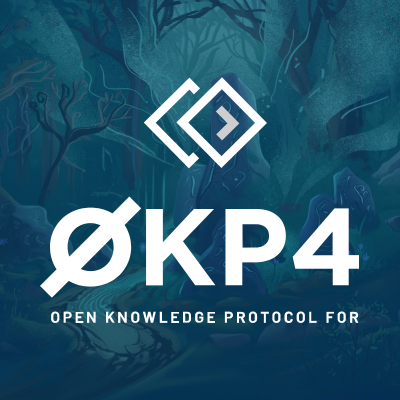Infrastructure
Our infrastructure was built with maximum security and performance at the forefront.
We provide secure, reliable, and non-custodial infrastructure so you can earn rewards.
Climate Control
Secure infrastructure regardless of any climate risk. We take extra measures to make sure the room temperature stays constant.
UPS backup in case of power surges
Our data centers are as stable as they get, we always use USP backup in case of power surges occur.
High-performance servers
A state-of-the-art approach when it comes to technologies that built trust in transitions and increase efficiencies.
Fire protection
Supports hundreds of mainstream crypto assets from leading Blockchains via our cross-chain hub, enabling cross-chain bridging between different ecosystems.
24/7 qualified technicians
24/7 monitoring of services and infrastructure. Servers are audited by 3rd party security companies.
Enhanced DDoS protection
This ensures the service continuity of the applications in the event of attacks and guarantees you maximum security.
Security
We run separate bare metal servers for validation purposes and sentry nodes in different geographical regions to achieve high peering for our validation service. 24/7 monitoring of services and infrastructure. Servers are audited by 3rd party security companies.
Transparency
This is one of our core values and it is utterly reflected in our decision-making. For this reason, all future changes of our rates will be duly notified and scheduled in advance.
Dedicated Support
We are reachable across different channels, including emails, Telegram, Twitter.
Skin in the game
We invest our coins side by side with our delegators, as being part of the process, for both benefits and risks.
This proves our long-term commitment and faith in our network.
Since our system is fully automated, all payouts and benefits are calculated and processed instantly, so you will have the reward in your wallet immediately after it becomes available.
Supported PoS Networks
Infrastructure operator for Proof-of-Stake (PoS) public blockchains
Latest blog posts
Check out our latest updates
Frequently asked questions
What is Proof of Stake (PoS)?
Proof-of-Stake (PoS) is a consensus mechanism in which stakers or block validators are chosen randomly, proportional to the amount of coins they stake. It was created by Vitalik Buterin as an alternative to Bitcoin’s Proof-of-work (where powerful computers hardware are used) to overcome the old consensus mechanism’s inherent latency and scalability issues. Unlike PoW, PoS protocols use minimal electricity to maintain a node and are therefore much more environmentally friendly.
How does staking crypto make money?
When individuals stake their coins, they are essentially lending their coins to the network to validate transactions. In exchange for lending your coins and helping validate, the network rewards you with additional coins - effectively allowing you to earn interest.
What is the benefit of staking Crypto?
Staking is an umbrella term used to denote the act of pledging your crypto-assets to a cryptocurrency protocol to earn rewards in exchange. Staking allows users to participate in securing the network by locking up tokens. Consequently, users are rewarded for securing the network in the form of native tokens.
What happens when you stake Crypto?
When a crypto investor stakes their holdings (in other words, leaves them in their wallet), the network can use those holdings to forge new blocks on the blockchain. The more crypto you're staking, the better the odds are that your holdings will be selected.
Is crypto staking worth it?
Yes, crypto staking is worth it if done correctly. Staking is all about how many coins you are holding. The amount determines your reward. A user who has secured more of a certain coin is more likely to be chosen as the new block validator.
Is staking crypto safe?
With cold staking an user can stake his crypto using a hardware wallet or another cold wallet. The advantage of this is that the funds are safe, because the wallet is not connected to the internet. You need physical access to your wallet to manage the funds.
What are the benefits of staking?
Staking is an alternative method of providing security and effectiveness to the blockchain network in exchange for an incentive and without wasting resources. It is based on the Proof of Stake consensus algorithm where instead of needing energy to create new blocks, it does it with staked coins.
What is the downside of staking?
A significant disadvantage of staking is that it can become too centralized: Taking into account that people with the higher amount of coins staked have better chances to earn the rewards for a validated block, small investors will always run from behind.
Can you lose crypto by staking?
Market Risk. Arguably, the biggest risk that investors face when staking cryptocurrency is a potential adverse price movement in the asset(s) they are staking. If, for example, you are earning 15% APY for staking an asset but it drops 50% in value throughout the year, you will still have made a loss.
Is staking better than mining?
Staking uses little resources when compared to mining or PoW. This means less electricity consumption and no need for extra machines to participate in staking. Given the holder of the coins is incentivized to keep them rather than selling them, there will be stability in the price of coins.
Is proof of stake the future?
The proof of stake (PoS) protocol is one of the most significant elements of contemporary blockchain architecture. Not only does it provide efficiency, but it is also cost effective and future-proof.
Can you sell while staking?
Can I trade while staking? Yes, you may trade any coins you have. However, once a trade is filled, the staked balance will change, and the corresponding rewards that you will earn from daily snapshots will adjust accordingly. You can trade to accumulate supported staking coins, as well as sell them at any time.























